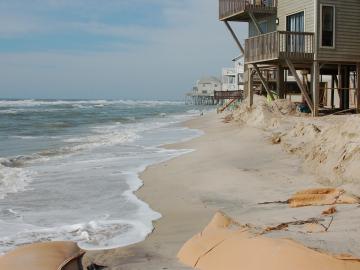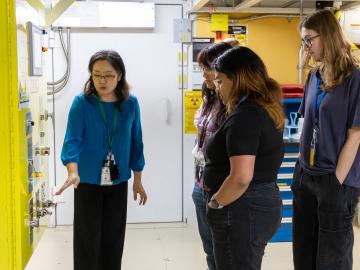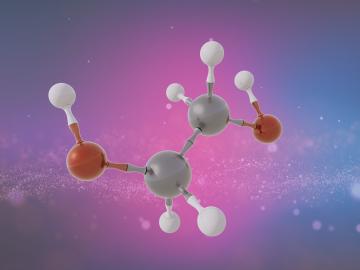
Filter News
Area of Research
News Topics
- (-) Biomedical (40)
- (-) Coronavirus (25)
- (-) Environment (70)
- (-) Exascale Computing (28)
- (-) Nanotechnology (28)
- (-) Neutron Science (68)
- (-) Transportation (37)
- 3-D Printing/Advanced Manufacturing (63)
- Advanced Reactors (20)
- Artificial Intelligence (54)
- Big Data (40)
- Bioenergy (31)
- Biology (28)
- Biotechnology (12)
- Buildings (30)
- Chemical Sciences (35)
- Clean Water (9)
- Composites (15)
- Computer Science (99)
- Critical Materials (10)
- Cybersecurity (7)
- Education (2)
- Emergency (3)
- Energy Storage (38)
- Fossil Energy (4)
- Frontier (22)
- Fusion (29)
- Grid (26)
- High-Performance Computing (48)
- Hydropower (1)
- Isotopes (31)
- ITER (2)
- Machine Learning (31)
- Materials (26)
- Materials Science (73)
- Mathematics (9)
- Mercury (2)
- Microelectronics (2)
- Microscopy (17)
- Molten Salt (7)
- National Security (36)
- Nuclear Energy (56)
- Partnerships (29)
- Physics (31)
- Polymers (17)
- Quantum Computing (20)
- Quantum Science (39)
- Security (18)
- Simulation (24)
- Space Exploration (7)
- Statistics (3)
- Summit (33)
Media Contacts

A study found that beaches with manmade fortifications recover more slowly from hurricanes than natural beaches, losing more sand and vegetation. The researchers used satellite images and light detection and ranging data, or LIDAR, to measure elevation changes and vegetation coverage. Changes in elevation showed how much sand was depleted during the storm and how much sand returned throughout the following year.

At ORNL, a group of scientists used neutron scattering techniques to investigate a relatively new functional material called a Weyl semimetal. These Weyl fermions move very quickly in a material and can carry electrical charge at room temperature. Scientists think that Weyl semimetals, if used in future electronics, could allow electricity to flow more efficiently and enable more energy-efficient computers and other electronic devices.

The 26th annual National School on Neutron and X-ray Scattering School concluded on August 9, 2024. Each year, more than 200 graduate students in North America studying physics, chemistry, engineering, biological matter and more compete to participate in NXS. However, given limited space, only 60 can be accepted. The school exposes graduate students to neutron and X-ray scattering techniques through lectures, experiments, and tutorials.

A research team led by the Department of Energy’s Oak Ridge National Laboratory demonstrated an effective and reliable new way to identify and quantify polyethylene glycols in various samples.

The world’s fastest supercomputer helped researchers simulate synthesizing a material harder and tougher than a diamond — or any other substance on Earth. The study used Frontier to predict the likeliest strategy to synthesize such a material, thought to exist so far only within the interiors of giant exoplanets, or planets beyond our solar system.

Brian Sanders is focused on impactful, multidisciplinary science at Oak Ridge National Laboratory, developing solutions for everything from improved imaging of plant-microbe interactions that influence ecosystem health to advancing new treatments for cancer and viral infections.

To better predict long-term flooding risk, scientists at the Department of Energy’s Oak Ridge National Laboratory developed a 3D modeling framework that captures the complex dynamics of water as it flows across the landscape. The framework seeks to provide valuable insights into which communities are most vulnerable as the climate changes, and was developed for a project that’s assessing climate risk and mitigation pathways for an urban area along the Southeast Texas coast.

Researchers conduct largest, most accurate molecular dynamics simulations to date of two million correlated electrons using Frontier, the world’s fastest supercomputer. The simulation, which exceed an exaflop using full double precision, is 1,000 times greater in size and speed than any quantum chemistry simulation of it's kind.

In the wet, muddy places where America’s rivers and lands meet the sea, scientists from the Department of Energy’s Oak Ridge National Laboratory are unearthing clues to better understand how these vital landscapes are evolving under climate change.

Bill Partridge, a recently retired distinguished researcher at the U.S. Department of Energy’s Oak Ridge National Laboratory, was recognized by DOE’s Vehicle Technologies Office, or VTO, for leading world-class research in transportation throughout his 25-year career.


